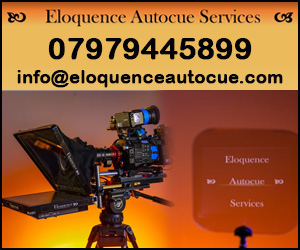Broadcast News
21/11/2016
New Immersive Audio Concepts

Anyone with even half an eye on today's audio press has surely noticed the buzz around immersive experiences, says Jon Schorah, Founder and Creative Director of NUGEN Audio.
While it's easy to assume that most of this is to do with VR and computer gaming, there's also a revolution underway in movie theatres that could come to redefine the way we think about audio production for both film and television.
Since the invention of sound recording, audio has been largely a channel-based concept. As audience demand for greater immersion has increased, so have the number of channels in movie theatres, from stereo to 5.1 and now 7.1. More recently, theatres have started adding a vertical element as a height layer with 9.1 (and greater) channel counts.
Increasing the audio resolution allows the sound engineer to effectively design sound in 3D and employ more addressable speakers for specific localisation and realism. In a traditional sound mixing environment, this means lots more channels – lots more. The problem with this approach is that as channel counts increase, so does the complexity, leading to an unwieldy mix that does not translate well to different system configurations. Whilst this is manageable for a 5.1 soundtrack that can be effectively downmixed to stereo, the same cannot be said for a 22.2 cinematic release!
Object audio is an all-new paradigm in sound mixing which bypasses the concept of audio tracks entirely. Instead, the audio engineer positions sound at a theoretical point in a three-dimensional space, building a virtual audio model. There are no prescribed audio channels and translation to the available speaker configuration is handled automatically in software, meaning that the "perfect" model is maintained as the reference mix at all times.
Of course, swapping multiple channels for vast numbers of objects, whilst increasing translatability, does not necessarily lead to a reduction in complexity. Therefore, the object audio model also includes a 9.1 channel-based "bed track" (7.1.2 configuration) for use in combination with specific objects.
This is a dramatic conceptual step forward, but it will require new tools in NLE/DAW systems for placing and controlling objects and generating the complex associated metadata. Potentially, object audio technologies such as Dolby Atmos and its newly announced rival, DTS:X, mean that a single mix can be universally translated from the cinema right down to the most basic domestic environment. This preserves as much of the original artistic intent as possible without the need for individual cinema, 5.1, LCR sound-bar, or stereo mixes.
In addition to providing a single unifying mix from the theatre to the home, object audio offers another potential benefit to the home consumer: personalisation. Naturally, a personal auditory experience is more satisfying and immersive than a one-size-fits-all approach. Mixes using objects rather than fixed channels can allow elements to be exposed to user control. Dialog, for instance, can be made available as an individual object, allowing the user to raise or lower the level for personalised levels of intelligibility and comfort. Different objects can be activated and deactivated to allow multiple languages or viewpoints to be delivered within the same mix.
However, these new possibilities are not without their complications. Take, for example, a solution that gives the user control over the crowd volume level, position in the stadium, and commenter/dialogue levels for a football game. How will these elements be controlled? Will the user get lost in the interface and ultimately miss key moments in the game while fiddling with the controls in an attempt to get something that "just works?" Clearly these technologies allow for an immense level of customisation, but there is much work to be done so that the consumer can enjoy the benefits with no more effort than turning on the TV and sitting back to enjoy the show.
There are also technical issues to consider. We have only just settled on international standards for loudness measurement and control of channel-based audio. How does this relate to object audio? If the user has control over the elements included in the sound track, how is loudness taken into account? How will we stream all these new audio objects within the current bandwidth limits of existing distribution models? Already research is underway to examine these issues and many others, but perhaps this is the purview of a more technical discussion.
One thing however is sure: immersive, object audio is one of those rare conceptual game changers that has the potential to re-define how we create and enjoy sound. With their scalability and potential for new levels of creativity and realism, these concepts are likely here to stay. How this will pan out for audio engineers, broadcasters, and consumers remains to be seen. But for those of us involved at the creative end, now is the time to skill up and immerse ourselves in this exciting and rapidly developing technology.
Jon Schorah is founder and creative director of NUGEN Audio.
This article is also available to read at BFV online as part of this issue's Audio feature here, page 38.
(JP/LM)
While it's easy to assume that most of this is to do with VR and computer gaming, there's also a revolution underway in movie theatres that could come to redefine the way we think about audio production for both film and television.
Since the invention of sound recording, audio has been largely a channel-based concept. As audience demand for greater immersion has increased, so have the number of channels in movie theatres, from stereo to 5.1 and now 7.1. More recently, theatres have started adding a vertical element as a height layer with 9.1 (and greater) channel counts.
Increasing the audio resolution allows the sound engineer to effectively design sound in 3D and employ more addressable speakers for specific localisation and realism. In a traditional sound mixing environment, this means lots more channels – lots more. The problem with this approach is that as channel counts increase, so does the complexity, leading to an unwieldy mix that does not translate well to different system configurations. Whilst this is manageable for a 5.1 soundtrack that can be effectively downmixed to stereo, the same cannot be said for a 22.2 cinematic release!
Object audio is an all-new paradigm in sound mixing which bypasses the concept of audio tracks entirely. Instead, the audio engineer positions sound at a theoretical point in a three-dimensional space, building a virtual audio model. There are no prescribed audio channels and translation to the available speaker configuration is handled automatically in software, meaning that the "perfect" model is maintained as the reference mix at all times.
Of course, swapping multiple channels for vast numbers of objects, whilst increasing translatability, does not necessarily lead to a reduction in complexity. Therefore, the object audio model also includes a 9.1 channel-based "bed track" (7.1.2 configuration) for use in combination with specific objects.
This is a dramatic conceptual step forward, but it will require new tools in NLE/DAW systems for placing and controlling objects and generating the complex associated metadata. Potentially, object audio technologies such as Dolby Atmos and its newly announced rival, DTS:X, mean that a single mix can be universally translated from the cinema right down to the most basic domestic environment. This preserves as much of the original artistic intent as possible without the need for individual cinema, 5.1, LCR sound-bar, or stereo mixes.
In addition to providing a single unifying mix from the theatre to the home, object audio offers another potential benefit to the home consumer: personalisation. Naturally, a personal auditory experience is more satisfying and immersive than a one-size-fits-all approach. Mixes using objects rather than fixed channels can allow elements to be exposed to user control. Dialog, for instance, can be made available as an individual object, allowing the user to raise or lower the level for personalised levels of intelligibility and comfort. Different objects can be activated and deactivated to allow multiple languages or viewpoints to be delivered within the same mix.
However, these new possibilities are not without their complications. Take, for example, a solution that gives the user control over the crowd volume level, position in the stadium, and commenter/dialogue levels for a football game. How will these elements be controlled? Will the user get lost in the interface and ultimately miss key moments in the game while fiddling with the controls in an attempt to get something that "just works?" Clearly these technologies allow for an immense level of customisation, but there is much work to be done so that the consumer can enjoy the benefits with no more effort than turning on the TV and sitting back to enjoy the show.
There are also technical issues to consider. We have only just settled on international standards for loudness measurement and control of channel-based audio. How does this relate to object audio? If the user has control over the elements included in the sound track, how is loudness taken into account? How will we stream all these new audio objects within the current bandwidth limits of existing distribution models? Already research is underway to examine these issues and many others, but perhaps this is the purview of a more technical discussion.
One thing however is sure: immersive, object audio is one of those rare conceptual game changers that has the potential to re-define how we create and enjoy sound. With their scalability and potential for new levels of creativity and realism, these concepts are likely here to stay. How this will pan out for audio engineers, broadcasters, and consumers remains to be seen. But for those of us involved at the creative end, now is the time to skill up and immerse ourselves in this exciting and rapidly developing technology.
Jon Schorah is founder and creative director of NUGEN Audio.
This article is also available to read at BFV online as part of this issue's Audio feature here, page 38.
(JP/LM)
Top Related Stories
Click here for the latest broadcast news stories.
11/11/2016
What Is The Future For Immersive Audio?
Peter Poers, Managing Director at Jünger Audio, looks at production efforts versus consumer experience. Introduction Along with the evolution of highe
What Is The Future For Immersive Audio?
Peter Poers, Managing Director at Jünger Audio, looks at production efforts versus consumer experience. Introduction Along with the evolution of highe
13/09/2022
Calrec Audio Unveils New Audio Mixing System
At IBC 2022 Calrec Audio will unveiled a new audio mixing system designed to keep pace with the changes broadcasters are experiencing in their product
Calrec Audio Unveils New Audio Mixing System
At IBC 2022 Calrec Audio will unveiled a new audio mixing system designed to keep pace with the changes broadcasters are experiencing in their product
03/10/2019
DHD Audio Announces Additions To Audio Mixing Consoles
DHD Audio has announced five major additions to the capabilities of its RX2, SX2, 52/TX and 52/MX audio mixing consoles. Introduced at IBC 2019 in Ams
DHD Audio Announces Additions To Audio Mixing Consoles
DHD Audio has announced five major additions to the capabilities of its RX2, SX2, 52/TX and 52/MX audio mixing consoles. Introduced at IBC 2019 in Ams
06/06/2017
Object Based Audio In Broadcast – The Next Challenge
The world of broadcast audio is on the verge of a major revolution, says Peter Poers, Managing Director, Jünger Audio. Numerous "3D Immersive" formats
Object Based Audio In Broadcast – The Next Challenge
The world of broadcast audio is on the verge of a major revolution, says Peter Poers, Managing Director, Jünger Audio. Numerous "3D Immersive" formats
09/08/2012
Blackmagic Design Announces Major New Software Update
Blackmagic Design has announced a major new software update that adds full-audio mixing capability to its ATEM 1 M/E Production Switcher and ATEM Tele
Blackmagic Design Announces Major New Software Update
Blackmagic Design has announced a major new software update that adds full-audio mixing capability to its ATEM 1 M/E Production Switcher and ATEM Tele
17/10/2022
Calrec To Unveil New Audio Mixing System In The US
For the first time in the US, Calrec will be showing its new audio mixing system – Argo - designed to keep pace with the changes broadcasters are expe
Calrec To Unveil New Audio Mixing System In The US
For the first time in the US, Calrec will be showing its new audio mixing system – Argo - designed to keep pace with the changes broadcasters are expe
22/05/2014
Sound Mixer Relies On Sound Devices' Digital Recorder For Audio Production
Veteran Sound Mixer Danny Michael, whose recent portfolio includes the high-profile feature films The Secret Life of Walter Mitty with Ben Stiller, Jo
Sound Mixer Relies On Sound Devices' Digital Recorder For Audio Production
Veteran Sound Mixer Danny Michael, whose recent portfolio includes the high-profile feature films The Secret Life of Walter Mitty with Ben Stiller, Jo
27/03/2013
Prism Sound Reveals Lyra Audio Interface At Prolight + Sound 2013
European studio producers, musicians and DJs will have their first opportunity to see Prism Sound’s new Lyra family of Audio Interfaces at this year’s
Prism Sound Reveals Lyra Audio Interface At Prolight + Sound 2013
European studio producers, musicians and DJs will have their first opportunity to see Prism Sound’s new Lyra family of Audio Interfaces at this year’s
15/10/2024
Milk Audio Store Opens PMC-Equipped Solby Atmos Mixing Facility
Italian Pro Audio and Synthesiser distributor Milk Audio Store has opened a PMC-equipped Dolby Atmos mixing facility at its premises in Rome in order
Milk Audio Store Opens PMC-Equipped Solby Atmos Mixing Facility
Italian Pro Audio and Synthesiser distributor Milk Audio Store has opened a PMC-equipped Dolby Atmos mixing facility at its premises in Rome in order
02/10/2024
Radio Clodia Selects DHD SX2 And XC3 Audio Mixing System
Celebrating its 40th anniversary this year, Radio Clodia has chosen a DHD SX2 audio mixing console and XC3 IP processing core in a major upgrade of th
Radio Clodia Selects DHD SX2 And XC3 Audio Mixing System
Celebrating its 40th anniversary this year, Radio Clodia has chosen a DHD SX2 audio mixing console and XC3 IP processing core in a major upgrade of th
26/03/2024
CMP Studio Tackles Immersive Mixing With Nugen Audio
Like many in the industry, Multi-platinum, Award-winning Producer, Engineer, Mixer, Songwriter and Musician Clint Murphy's latest work has been consum
CMP Studio Tackles Immersive Mixing With Nugen Audio
Like many in the industry, Multi-platinum, Award-winning Producer, Engineer, Mixer, Songwriter and Musician Clint Murphy's latest work has been consum
04/03/2024
Calrec To Highlight Its Argo Audio Mixing Control Platform
Calrec's award-winning Argo audio mixing control platform, which won NAB 2023 Product of the Year, will be highlighted at this year’s NAB. On show for
Calrec To Highlight Its Argo Audio Mixing Control Platform
Calrec's award-winning Argo audio mixing control platform, which won NAB 2023 Product of the Year, will be highlighted at this year’s NAB. On show for
27/04/2023
RTVC Invests In DHD Audio Mixing Consoles
Colombia's national radio and television broadcaster, RTVC, has invested in eight DHD audio mixing consoles as the production core of four additions t
RTVC Invests In DHD Audio Mixing Consoles
Colombia's national radio and television broadcaster, RTVC, has invested in eight DHD audio mixing consoles as the production core of four additions t
20/02/2023
RadiOrizzonti Selects DHD DX2 Audio Mixing Consoles
Saronno-based regional broadcaster RadiOrizzonti has chosen latest-generation DHD DX2 audio mixing consoles as the control hub of a completely rebuilt
RadiOrizzonti Selects DHD DX2 Audio Mixing Consoles
Saronno-based regional broadcaster RadiOrizzonti has chosen latest-generation DHD DX2 audio mixing consoles as the control hub of a completely rebuilt
06/12/2022
Gold Diggers Transforms Studios Into Audio Music Mixing Rooms
Gold Diggers, a unique music production complex in East Hollywood, Los Angeles, has transformed two of its seven studios into immersive audio music mi
Gold Diggers Transforms Studios Into Audio Music Mixing Rooms
Gold Diggers, a unique music production complex in East Hollywood, Los Angeles, has transformed two of its seven studios into immersive audio music mi















